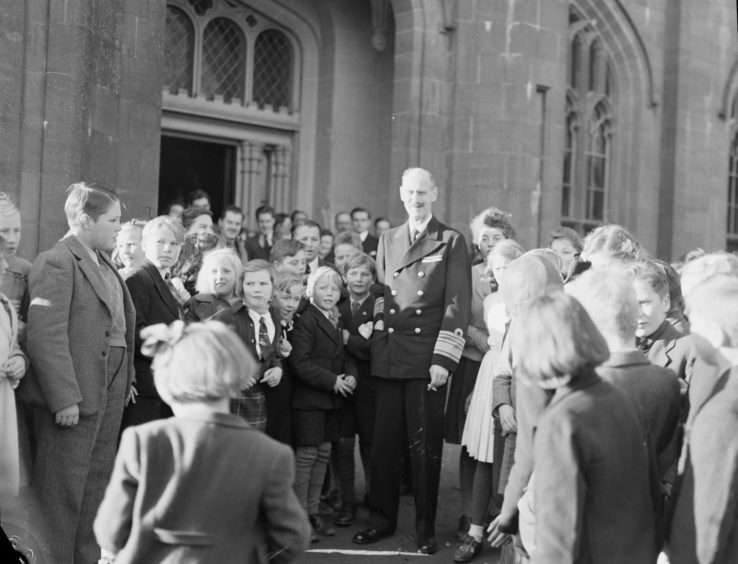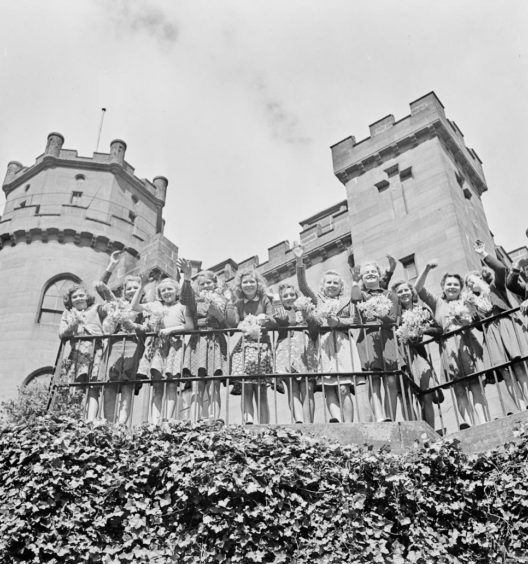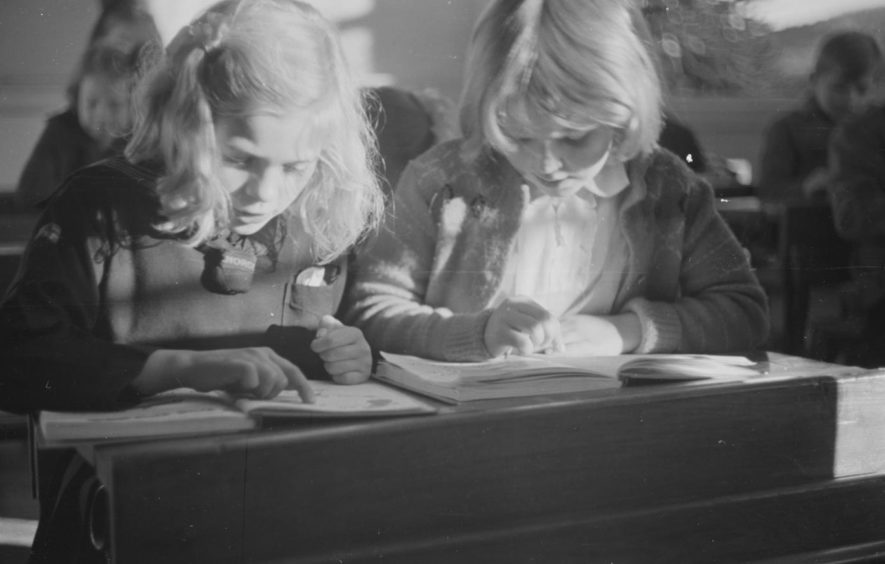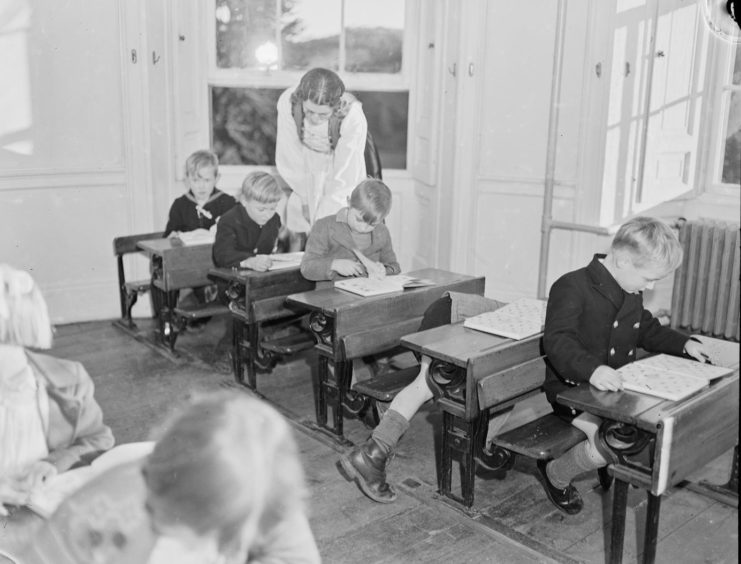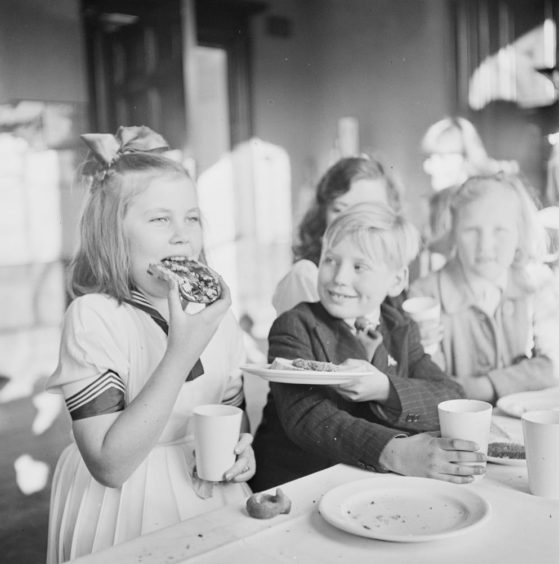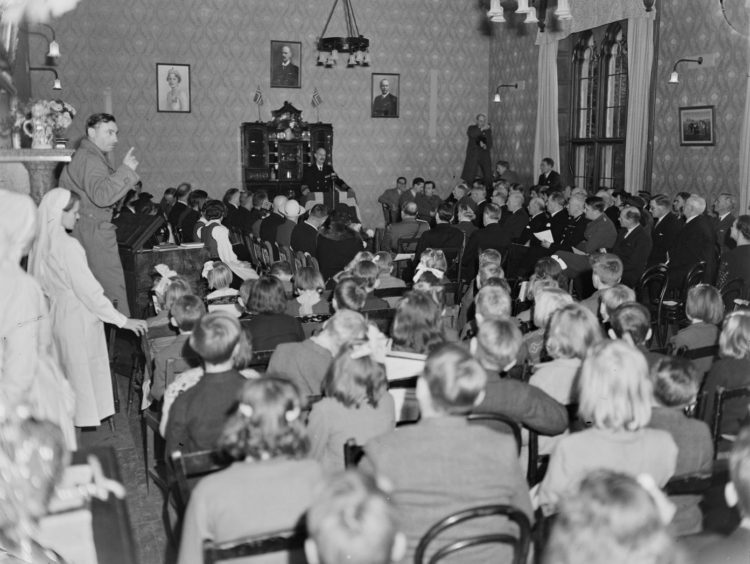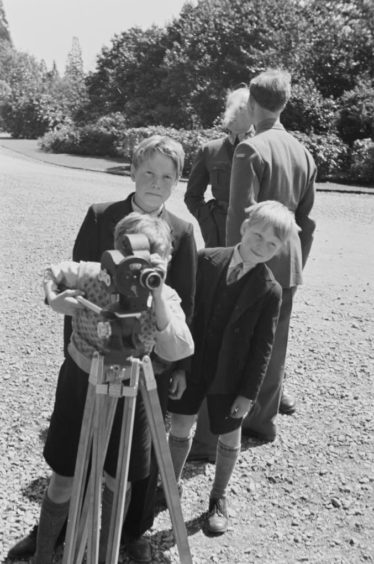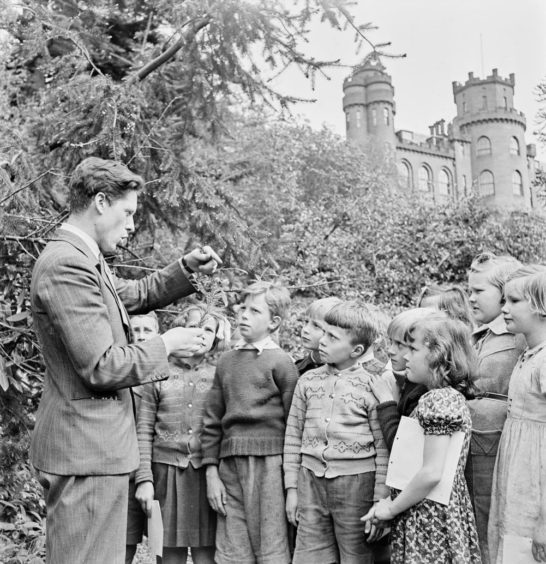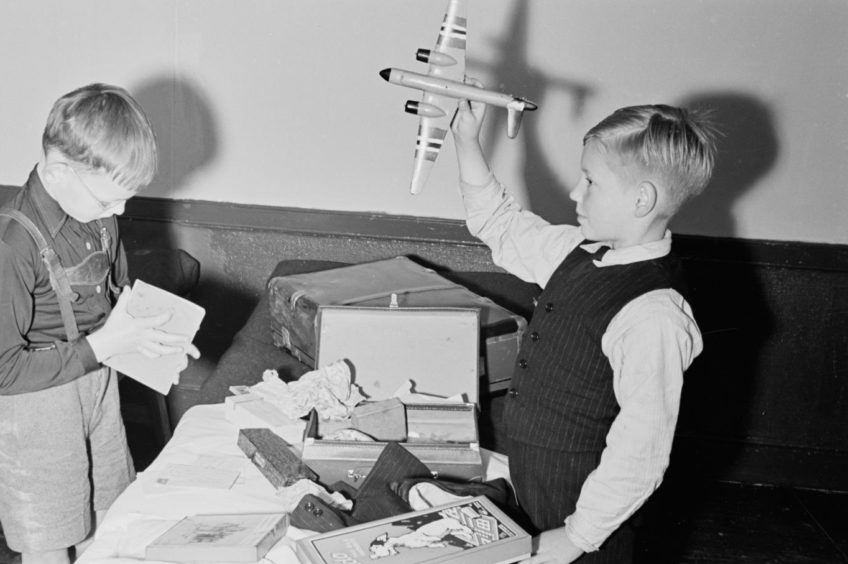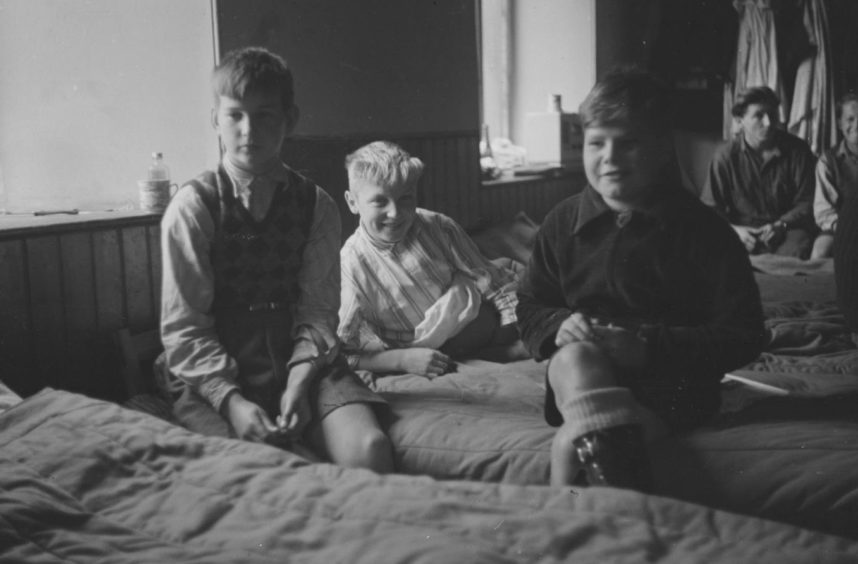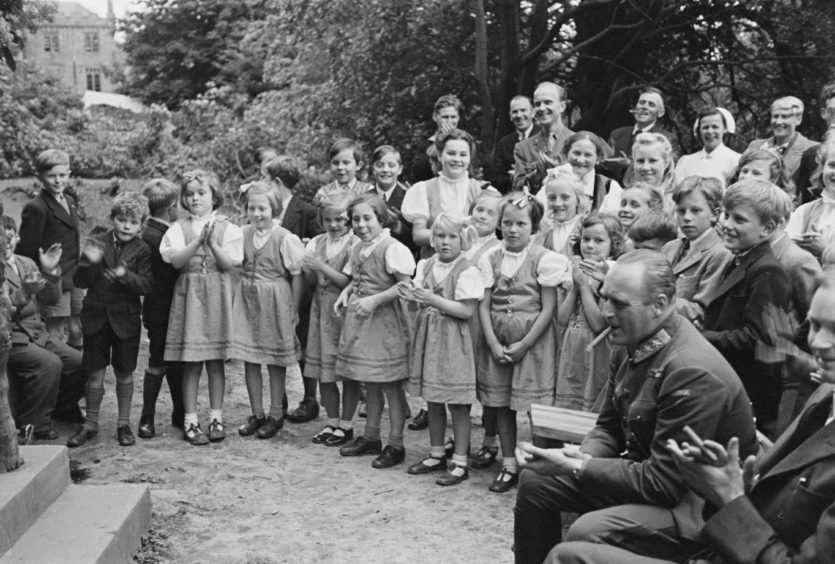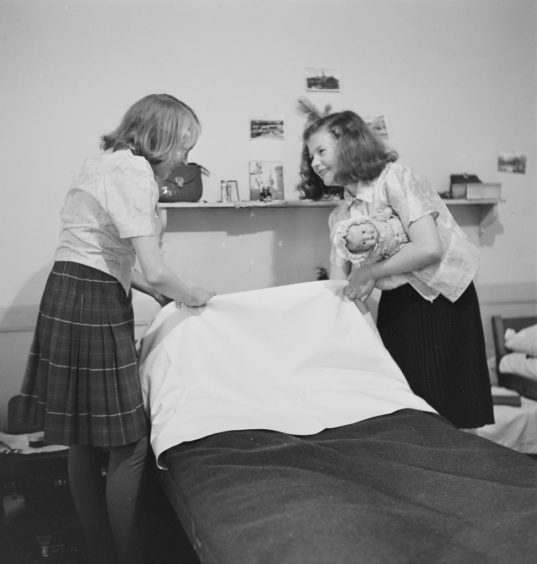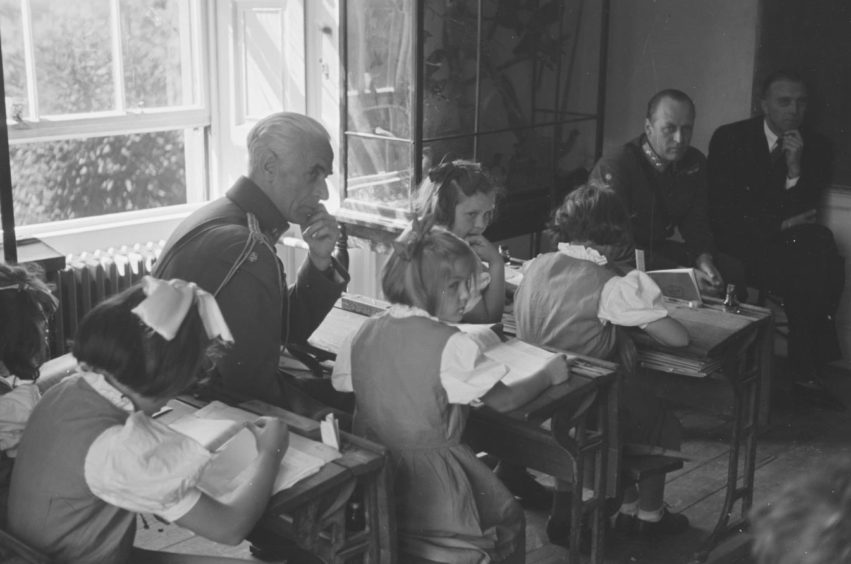Nestling in the heart of the rolling Mearns countryside, elegant Drumtochty Castle and its lush wooded grounds and gardens today offer an idyllic retreat, popular for weddings and gatherings.
Almost 80 years ago, though, it was a retreat of a very different sort – a safe haven for Norwegian children who fled the Nazi invasion of their homeland.
During the dark years of the Second World War, Drumtochty Castle was bought by the Norwegian-government-in-exile as a boarding school for the young refugees, keeping alight the Scandinavian nation’s education and traditions, ready for the day they could return home.
Now, rarely seen photographs of life at the school – including visits by King Haakon and Crown Prince Olav – have been released by the National Archive in Norway, just as a Norwegian masters student researches the relationship between the children who called the school home and the people of the local community of Auchenblae and the wider north-east.
Ragnhild Bie Nielsen, MA student in history at the University of Agder, said while Drumtochty offered a sanctuary for around 80 Norwegian children, the journey that led them to the castle was a nightmarish experience for many of them.
Families grabbed what they could and fled
“They had a traumatic background with the occupation of Norway, the dangerous escape in which many of them came in small fishing vessels across the North Sea, some in airplanes,” said Ragnhild, adding in some cases it was just a case of families grabbing what they could and fleeing, sometimes in open boats, as Nazi troops stormed the country in April 1940.
But even after reaching the safety of Scotland, the children faced difficulties as families settled in their new home in larger cities, said Ragnhild, who is also a project team member at The War Sailor Register, at Norway’s ARKIVET Peace and Human Rights Centre.
She said: “A lot of them came from small communities around (Norway) and many of them fell ill from tuberculosis. They were not used to living in crowded environments in the big cities in Glasgow and London and so on.
“The Norwegian-government-in exile quickly decided they had to make an arrangement for these children to not only keep them safe from illness and bombs, but to make sure their education was still adequate for when they returned to Norway after the war.”
And Drumtochty Castle proved to be the ideal spot.
Set in lush countryside, quiet and contained it was the perfect location for Norway’s beacon of hope for the future.
It was opened with great ceremony and fanfare by Norway’s King Haakon on November 2 1942.
Cheering children mobbed the King of Norway
A report of the high-profile event in the Press & Journal told of children singing Auld Lang Syne for the King and how they beamed and curtsied as he presented each with a gift of chocolate, later cheering and mobbing him as he walked to his car.
The P&J said: “There were proud moments for the King as he met his young subjects, many of who shared the perils of the North Sea with their parents and teachers in escaping from the Nazi invaders.”
The paper also told the story of one pupil, seven-year-old Per, who gained fame after arriving in Scotland as a stowaway.
It reported: “Per’s father had decided to leave him at home, but when the boat in which the journey was made was well under way, a head popped from under a tarpaulin and Per cried: ‘Here I am father’.
“Other children came back…from Vaagso, Lofoten and Spitzbergen.”
In his speech to the assembled dignitaries, parents, teachers and pupils, King Haakon expressed gratitude for the warm welcome the children had been given in Scotland, adding it was the first time since the war started he had met Norwegian children with their teachers.
Admiration of world for stand against Nazis
He said: “I avail myself of this opportunity of thanking the Norwegian teachers for the stand they have taken against the Nazis. The stand they have taken has gained them the admiration of the whole world.”
The King also had a special message for the pupils.
“Do not forget you are here as small representatives, but nevertheless very important representatives of your fatherland. Try to live so that you will never be ashamed of it.”
He earned a round of laughter by adding: “Of course, I know you are just human beings, as we all are, but try your best not to spoil the floors and decorations on the walls of this castle.”
Both the King and Crown Prince Olav became frequent visitors to the castle, attending Christmas parties and touring on Norway’s national day.
Apart from visiting royalty, the children settled into everyday life at the school, which boarded children between seven and 14-years-old, said Professor Peter Reid of Robert Gordon University.
He said: “The whole staff was Norwegian, cooks, nurses, teachers and a doctor. All lessons were conducted in Norwegian; they made great use of the grounds for botany, gardening and so on. English was taught however as a second language.
“There were initially six teachers but their identity was never mentioned in the press for fear of reprisals on any of their relatives still in Norway. There was also an English teacher, Miss O’Leary. The headmaster was, however, Jakob Rørvik.”
Peter said it was the first Norwegian school outside of Norway and a voluntary levy was charged to all Norwegians living in the UK to help support its costs.
Appeal for more information about school
Ragnhild, whose work emerged from Peter’s Little Norway project looking at the strong links between Norway and Buckie, said she wants to explore the relationship between the Norwegian and Scottish people during the war, especially at Drumtochty.
She said: “They wanted to keep the Norwegian system of education, but a big part of their tuition was to learn to speak to English so they could make do in the communities where they lived.
“That’s what I find so interesting. How did they mix with the local community? Did they have a relationship with the Scottish (people) or was it just like a Norwegian bubble in the Scottish countryside.”
Ragnhild is at the start of her research and hopes to find out if any of the pupils are still alive or if they have relatives who remember stories of the school.
She is also appealing to people in the north-east to help her find out more.
“I am very interested if anyone in Scotland remembers any stories about the children, for example, or if anyone has any stories, maybe their parents or grandparents told them, I would be very interested in hearing them.”
Hard to imagine what life was like for pupils
Ragnhild said her work was sparked by her interest in wartime stories. It was her mentor, Bjørn Tore Rosendahl, researcher and academic leader at the Centre for the History of Seafarers at War, in Norway’s ARKIVET Peace and Human Rights Centre, who inspired her to look at the school.
He put her in touch with Peter, who had worked with Bjørn on the Little Norway research.
Ragnhild said she was delighted by the recent release of photographs of the school by the national archive, giving more of insight into life in Drumtochty Castle. She hopes to visit the north-east once pandemic restrictions ease to further her research.
Ragnhild is full of admiration for the children and teachers of the Norwegian school, which closed its doors not long after the end of the war.
“It is hard to imagine for us what that must have been like. We know the war finished in 1945, but in 1944 they didn’t know that. It could have gone on for years. They lived in uncertainty all along, not knowing when they could go back home to Norway.”
If you have any memories or stories about Drumtochty to share with Ragnhild, you can email her at rbn@arkivet.no

